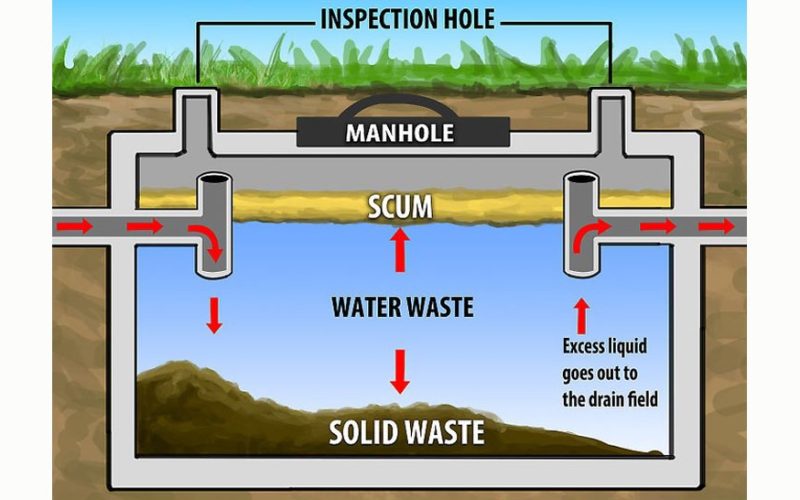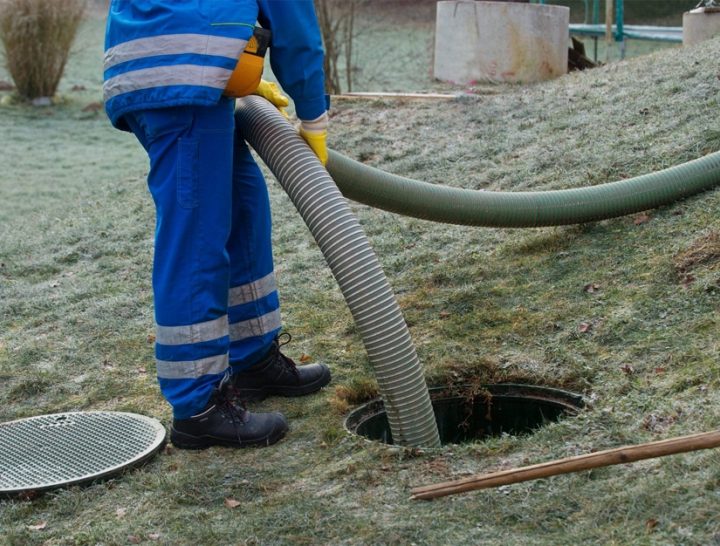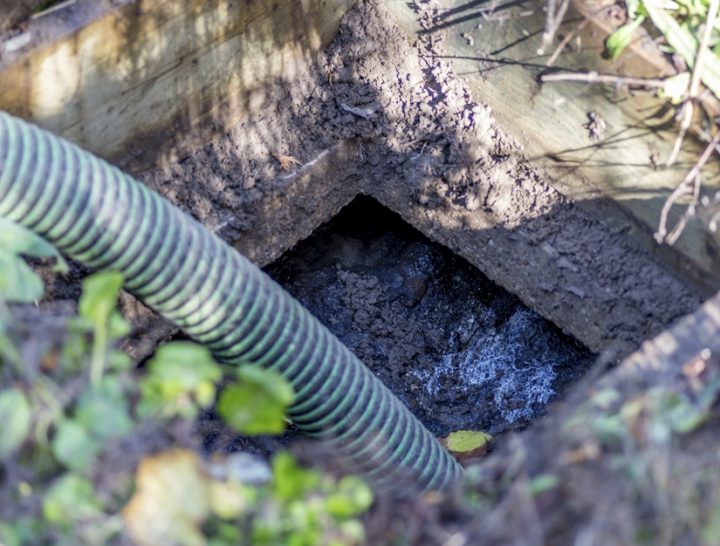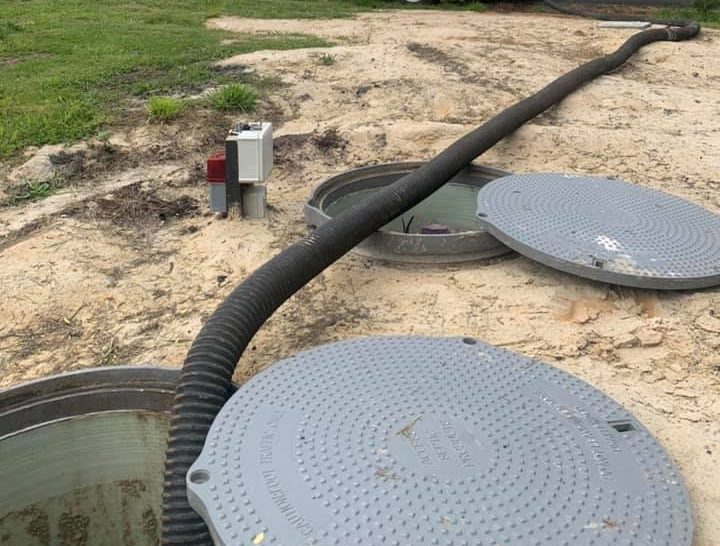Septic Systems

Understanding a Septic Tank System
A septic tank is a large underground tank that’s capable of holding hundreds of gallons of waste water. The most common tanks are 3000 lt and consist of a cylindrical tank approximately 2m long with two concrete lids, with wires for lifting, covering most of the length of the tank. The septic tank is connected to the house via the plumbing main line. All waste water in the home, which drains from sinks, toilets, showers and bathtubs, feeds into the septic tank via this line.
When the waste water enters the septic tank, it separates into three layers: solids at the bottom (sludge), water in the middle, and fats and oils at the top (scum). Bacteria that lives in the tank helps to break down the sludge, turning it into a liquid.
Near the top of the septic tank is a pipe that leads to a part of the yard called the drain field. When the waste water in the septic tank reaches this pipe, the water flows into the drain field and is filtered through the soil. The soil cleans the water, preventing contamination of ground water in the area.
Choosing A Certified Pumper
Choosing a certified septic tank pumper is essential for ensuring the job is done correctly, safely, and in compliance with local regulations. South Coast Septic Pumping is affiliated with EPA and SA Water and hold certifications and licensing to ensure compliance with safety, environment and health guidelines.
We have many years of industry experience in the septic industry and equipped to handle different systems and any unexpected issues. All our modern pump trucks and tools always provide an efficient and thorough cleanouts.
Our inspection services which can be valuable for detecting any structural or operational issues.


Septic Tank Pump Out
A septic tank pump-out involves removing the solid waste and sludge that accumulates in the tank over time. This maintenance process, typically done every 3-5 years, keeps your septic system functioning efficiently, prevents backups, and minimizes the risk of unpleasant odours or costly repairs. Regular septic pump-outs are essential for preventing issues, when you live in a rural area or rely on a septic system for waste management.
South Coast Septic Pumping will locate the tank, inspect tank to assess its condition, checking for cracks, leaks, or other potential issues and then using a high-powered pump which removes solid and liquid waste from the tank. They’ll also spray down the walls to clear any residual sludge. After pumping we double-check the tank to ensure it’s structurally sound and functioning properly.
Septic Tank Pumping Costings
It is recommended that property owners should pump their septic tanks on a regular basis to keep them functioning properly. A regular basis is every 3 – 5 years get your septic tank emptied. ( this will depend on the size of the tank and amount of wastewater produced by the household. If you choose to leave it longer, more sludge will build up at the bottom of the tank and the whole process of emptying a septic tank can be timely and expensive.
The average cost is between $240 – $300 for a septic tank and between $400 – $500 for an aerobic tank. This price will also vary due to:-
Your location. Size of your water treatment plant or septic tank that requires cleanin. Waste water treatment plants are usually more expensive. Expertise and experience is necessary as inexperienced operators can damage modern systems and cause very costly damage. Urgency and time frame Eg: Late Sunday afternoon or evening.


Best way to maintain my septic system? + -
The most important step in septic system maintenance is to be sure to schedule regular service calls by a septic professional. Have the system checked and the tank pumped every two to five years.
The second most important step is to be a responsible septic system user. It is important to conserve water, keep your drains clean of chemicals, grease and non biodegradable substances.
How often do I need to pump my septic tank? + -
This depends on water usage and the amount of waste entering the system. Generally, systems need to be maintained by a septic professional every two to five years.
What Can I Do To Keep My System Running Well? + -
Make sure the sludge is pumped out of your tank every two or three years. Harsh chemicals like paint solvents, thinners, and nail polish removers should never be poured down the drain. Bleach, sink and toilet cleaners, and drain openers are also harmful to the organisms in your tank that help breakdown bacteria. Diapers, feminine products, cigarette butts, condoms, and cotton swabs can cause blockages and should not be allowed into your system.
How Do I Know If My System Is Not Working Properly? + -
There are several signs of a failing sceptic system. These include: Sluggish or Gurgling Drains & Pipes | Plumbing Backups | Sewage Odour | Mushy Ground or Greener Grass Near Septic System
How do I know where my septic is located? + -
The best suggestion is to contact the local local council to obtain a copy of the lot. Some homes may have a white pvc pipe sticking up in the yard, or a concrete square or round lid.
Generally, a septic tank is a minimum of 5 to 15 feet from the home, in a direct line out from your sewage outlet pipe in the basement exiting the building. Tanks vary from 12 inches to 24 inches below the ground in most circumstances. About 95 percent of septic tanks have two cleanout access ports at either end, approximately 6 feet to 7 feet apart. Empty the primary and secondary chambers at each pumping to enable a thorough cleaning and inspection of your system.
Can I landscape over my septic system? + -
It is beneficial to grow grass or ground covers over your septic system to prevent soil erosion. Evergreens such as pines planted absorb excess water, and are beneficial. Avoid water-loving trees such as willows or poplars. Be sure to map where you septic system is for easy access when needed.
